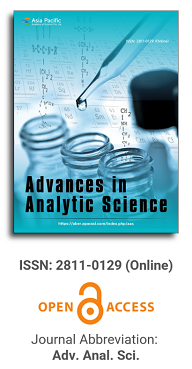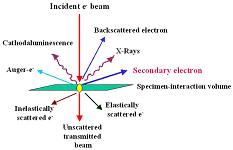
Asia Pacific Academy of Science Pte. Ltd. (APACSCI) specializes in international journal publishing. APACSCI adopts the open access publishing model and provides an important communication bridge for academic groups whose interest fields include engineering, technology, medicine, computer, mathematics, agriculture and forestry, and environment.

Advances in the application of chromatographic techniques in forensic toxicology fund
Vol 4, Issue 1, 2023
Download PDF
Abstract
As knowledge and civilization advance, forensic science and technology are continuously evolving. Chromatography, a key analytical method known for its simplicity, speed, and high sensitivity, is extensively utilized worldwide for detecting toxic substances and drugs in forensic investigations. This paper offers a thorough analysis of chromatographic techniques from three key angles: the historical development of chromatography, its classification based on phase states, chromatographic separation mechanisms and stationary phase characteristics, and its various applications. Additionally, the paper forecasts future trends in chromatographic analysis technology, aiming to inspire new directions for the advancement and research of other forensic science technologies.
Keywords
References
- Campelo ELC, Caldas ED. Postmortem data related to drug and toxic substance use in the Federal District, Brazil, from 2006 to 2008. Forensic Science International. 2010; 200(1-3): 136-140. doi: 10.1016/j.forsciint.2010.04.002
- Below E, Lignitz E. Cases of fatal poisoning in post- mortem examinations at the Institute of Forensic Medicine in Greifswald—analysis offive decades of post-mortems. Forensic Sci Int. 2003; 133(1-2): 125-131.
- Seymour A, Black M, Oliver JS. Drug related deaths in the Strathclyde region of Scotland, 1995-1998. Forensic Sci Int. 2001; 122(1): 52-59.
- Soltaninejad K, Faryadi M, Sardari F. Acute pesticide poisoning related deaths in Tehran during the period 2003– 2004. Journal of Forensic and Legal Medicine. 2007; 14(6): 352-354. doi: 10.1016/j.jflm.2006.12.011
- Report on China’s drug control situation in 2020. China’s national drug control office; 2021.
- Hadidi KA, Almasad JK, Al-Nsour T, et al. Determination of tramadol in hair using solid phase extraction and GC-MS. Forensic Sci Int. 2003; 135(2): 129-136.
- Ju Y, Yang C, Liu B, et al. Detection of 17 drugs in drug driving cases by ultra high performance liquid chromatography tandem mass spectrometry. Criminal technology. 2020; 45(5): 495-498.
- Hesse G, Weil H, et al. Miehael Tswett’s First Paper on Chromatography. Isis; 1956.
- Palmer LS. Carotenoids and Related Pigments: The Chromolipids. Am Chem Soc Monogr. Ser Chemical Calalog Co. New York; 1922.
- Jandera P, Churacek J. Gradient Elution in Liquid Chromatography. Theory and Practice, Epsevier Science Publishers, B.V.; 1985.
- Sentell KB, Dorsey JG. Retention mechanisms in reversedphase liquid chromatography. Stationary-phase bonding density and partitioning. Anal Chem. 1989; 61(9): 930-934. doi: 10.1021/ac00184a003
- Wang H, Zhou Y. Study on the method of rapid drug detection in drug driving scene. Progress in analytical chemistry. 2018; 8(2): 65-73. doi: 10.12677/aac.2018.82009
- Wei L. Qualitative and quantitative analysis of heroin by TLC scanning. In: Chinese society of forensic medicine Proceedings of the first national drug testing technology exchange. Chinese Journal of Forensic Medicine; 1997. pp. 315-317.
- Chen X, Wang X, Da H, et al. Research progress of planning drug MDPV. Shandong chemical industry. 2014; 43(4): 60-61,65.
- Cheng X, Huang L. Application of thin layer chromatography in drug detection. Guangdong Public Security Science and technology. 1997; 4(7): 25-28.
- Zhou L. Application of thin layer chromatography in drug detection. Journal of Youjiang Medical College for nationalities. 2000; 22(6): 949.
- Sabino BD, Romão W, Sodré ML, et al. Analysis of Cocaine and Crack Cocaine via Thin Layer Chromatography Coupled to Easy Ambient Sonic-Spray Ionization Mass Spectrometry. American Journal of Analytical Chemistry. 2011; 02(06): 658-664. doi: 10.4236/ajac.2011.26075
- De Carvalho TC, Tosato F, Souza LM, et al. Thin layer chromatography coupled to paper spray ionization mass spectrometry for cocaine and its adulterants analysis. Forensic Science International. 2016; 262: 56-65. doi: 10.1016/j.forsciint.2016.02.039
- Niu Y, Lu Y, Liu Y. Review on the testing methods of cannabis drugs. Criminal technology. 2004; 6: 21-23.
- Zhang X, Zhang X, Li H, et al. Establishment of gas chromatographic detection method for poisons and drugs in human blood. Journal of Changchun University of science and Technology (NATURAL SCIENCE EDITION). 2014; 37(1): 153-155,159.
- Ni S, Wu F, Wang S, et al. Study on the detection of hair samples of drug addicts with different degrees of addiction by gas chromatography-mass spectrometry. Chinese Journal of clinical pharmacology. 2020; 36(16): 2497-2500.
- Shi J, Zhou J, Zhao Y. Analysis of four amphetamine drugs in urine by pipette solid phase microextraction gas chromatography triple quadrupole mass spectrometry. Chinese Journal of drug abuse. 2020; 29(2): 111-116,141.
- Pan L, Luo S. Determination of four organochlorine pesticides by quechers gas chromatography. Guangdong chemical industry. 2021; 48(8): 269-270,289.
- Lee JG, Lee CG, Kwag JJ, et al. Fast analysis of nicotine in tobacco using double-shot pyrolysis—gas chromatographymass spectrometry. J Agric Food Chem. 2007; 55(4): 1097-1102. doi: 10.1021/jf062486u
- Jiang L, Chen X, Zhang H, et al. Analysis of six synthetic cannabinoids in hair by liquid chromatography electrospray spray ion trap mass spectrometry. Analytical testing technology and instruments. 2020; 26(3): 169- 178.
- Forest width Detection of three common synthetic cannabinoids in body fluids by ultra high performance liquid chromatography tandem mass spectrometry (Chinese). Beijing: People’s Public Security University of China; 2018.
- Chang Y, Xu P, Gao L. Determination of methcathinone by liquid chromatography. Chemical analysis and metrology. 2012; 21(1): 67-69.
- Zhong J, Sun H. Research progress in the analysis and detection of amphetamines in biological samples. Chemical engineer. 2016; 30(6): 48-51.
- Xia J. Analysis of methamphetamine content in suspected drugs by gas chromatography. Professional windows. 2021(12): 31.
- Yu, He P, Liu J, et al. Gc/MS analysis of main active components in “katong”. Chinese Journal of drug abuse. 2020; 26(1): 1-3.
- Qian Z, Chen Y, Hua Z. Study on qualitative test method of fentanyl like substance carfentanil. Analysis laboratory. 2019; 38(3): 270-274.
- He T, Hu S. Test and analysis of flutamidone by gas chromatography-mass spectrometry. Journal of Wuhan public security cadre college. 2021; (1): 48-52.
- Meng P, Wang Y, Wang J, et al Analysis of morphine drugs in blood by silylation gas chromatography-mass spectrometry. Analysis laboratory. 2009; 28(10): 13-16.
- Peng S, Wang J, Xin G. Study on the determination method of qualitative analysis results of six common drugs in urine under GC-MS selective ion mode. Chemical research and application. 2020; 32(2): 214-220.
- Cooper GAA, Kronstrand R, Kintz P. Society of Hair Testing guidelines for drug testing in hair. Forensic Science International. 2012; 218(1-3): 20-24. doi: 10.1016/j.forsciint.2011.10.024
- Pragst F, Balikova MA. State of the art in hair analysis for detection of drug and alcohol abuse. Clinica Chimica Acta. 2006; 370(1-2): 17-49. doi: 10.1016/j.cca.2006.02.019
- Meng P. Comparison of hair characteristics analysis between heroin and methamphetamine drug abusers. Applied chemistry. 2014; 31(1): 103-108.
- Gicquel T, Richeval C, Mesli V, et al. Fatal intoxication related to two new arylcyclohexylamine derivatives (2F- DCK and 3-MeO-PCE). Forensic Science International. 2021; 324: 110852. doi: 10.1016/j.forsciint.2021.110852
Supporting Agencies
Copyright (c) 2023 Shan Li, Xiaoyi Wang, Yanan Zhang, Zishen Wan, Yuanfeng Wang

This work is licensed under a Creative Commons Attribution 4.0 International License.

This site is licensed under a Creative Commons Attribution 4.0 International License (CC BY 4.0).
1.jpg)
Prof. Sivanesan Subramanian
Anna University, India





.jpg)
